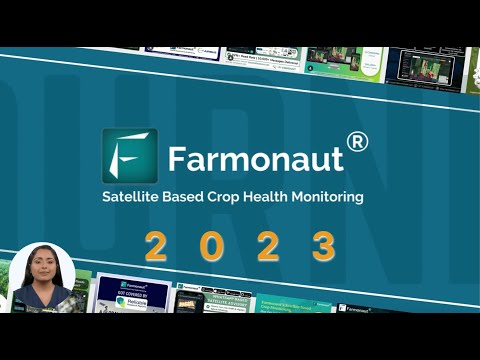Ontario’s Agricultural Trade Mission to China: Boosting Global Market Opportunities and Innovation
“Ontario’s recent trade mission to China resulted in key agreements affecting over 60% of the province’s agricultural exports.”
Welcome to our comprehensive exploration of Ontario’s recent agricultural trade mission to China, a pivotal move that’s set to reshape the landscape of international agricultural exports and global market opportunities. As we delve into this exciting development, we’ll uncover the innovative strategies, key partnerships, and technological advancements that are propelling Ontario’s agri-food sector to new heights on the world stage.

The Significance of Ontario’s Trade Mission to China
Ontario’s agricultural sector has long been a cornerstone of the province’s economy, and this recent trade mission to China marks a significant step towards expanding its global footprint. With China’s rapidly growing middle class and increasing demand for high-quality agricultural products, the opportunities for Ontario’s farmers and agribusinesses are immense.
During this mission, Ontario’s delegation, comprising government officials, industry leaders, and agricultural experts, engaged in a series of strategic meetings and negotiations with their Chinese counterparts. The focus was on fostering stronger agricultural trade relations and exploring new avenues for collaboration in areas such as:
- Expanding market access for Ontario’s diverse agricultural products
- Promoting sustainable agriculture practices
- Exchanging knowledge on agricultural innovation and technology
- Developing joint research initiatives in precision farming
These efforts have culminated in several key agreements that are set to boost Ontario’s agricultural exports and strengthen its position in the global agri-food sector.
Key Agreements and Partnerships
The trade mission has resulted in several groundbreaking agreements that promise to reshape Ontario’s agricultural trade landscape with China. Some of the most notable include:
- Dairy Export Agreement: A landmark deal to increase exports of Ontario’s high-quality dairy products to China, including specialty cheeses and milk powders.
- Grain and Oilseed Partnership: An agreement to enhance cooperation in the trade of wheat, corn, and canola, with a focus on sustainable production methods.
- Horticultural Exchange Program: A bilateral initiative to promote the exchange of fruits and vegetables, leveraging Ontario’s expertise in greenhouse technology.
- Agricultural Technology Collaboration: A memorandum of understanding to foster joint research and development in precision farming and smart agriculture solutions.
These agreements not only open new doors for Ontario’s agricultural products but also pave the way for knowledge exchange and technological collaboration between the two regions.
Expanding International Trade Relations
One of the most significant outcomes of the trade mission is the establishment of a dedicated trade advisory role in Beijing. This strategic move will provide Ontario’s agricultural sector with a permanent presence in China, facilitating ongoing dialogue, market intelligence, and support for businesses looking to enter or expand in the Chinese market.
The role will focus on:
- Providing real-time market insights to Ontario producers
- Facilitating connections between Ontario businesses and Chinese buyers
- Navigating regulatory requirements and trade barriers
- Promoting Ontario’s agricultural products at trade shows and events
This on-the-ground presence is expected to significantly enhance Ontario’s ability to respond to market opportunities and challenges in real-time, giving the province a competitive edge in the rapidly evolving Chinese market.
Leveraging Precision Farming Technology
A key focus of the trade mission was to showcase Ontario’s expertise in precision farming technology and explore opportunities for collaboration in this rapidly advancing field. Precision farming, which leverages data analytics, satellite imagery, and AI to optimize crop yields and resource management, is revolutionizing agriculture worldwide.
During the mission, Ontario’s delegation highlighted several innovative technologies that are driving the sector forward:
- Satellite-based crop monitoring systems
- AI-driven predictive analytics for yield optimization
- IoT sensors for real-time soil and crop health monitoring
- Automated irrigation and fertilization systems
These technologies not only enhance productivity but also promote sustainable agriculture practices by optimizing resource use and reducing environmental impact. The mission has opened up new avenues for Ontario’s agtech companies to collaborate with Chinese partners, potentially leading to joint ventures and technology transfer agreements.
In this context, it’s worth noting the innovative solutions offered by companies like Farmonaut, which provide advanced satellite-based farm management tools. While not directly involved in the trade mission, such technologies exemplify the kind of innovation that Ontario is bringing to the global agricultural stage.
Sustainable Agriculture Practices: A Shared Priority
Another crucial aspect of the trade mission was the focus on sustainable agriculture practices. With both Ontario and China facing environmental challenges and increasing pressure to reduce the carbon footprint of agriculture, there was a strong emphasis on exchanging knowledge and best practices in this area.
Key topics of discussion included:
- Regenerative farming techniques to improve soil health
- Water conservation methods in agriculture
- Integrated pest management to reduce chemical use
- Carbon sequestration in agricultural soils
The mission highlighted Ontario’s leadership in sustainable agriculture, showcasing innovative practices that are being implemented across the province. This focus on sustainability not only aligns with global environmental goals but also positions Ontario’s agricultural products as premium, environmentally responsible choices in the Chinese market.
Diversifying Agricultural Exports to China
While Ontario has a long history of exporting agricultural products to China, this trade mission aimed to diversify and expand the range of products finding their way to Chinese consumers. Some of the key product categories that are set to see increased market opportunities include:
- Dairy Products: High-quality cheeses, yogurts, and specialty milk products
- Fruits and Vegetables: Greenhouse-grown produce, berries, and tree fruits
- Grains and Oilseeds: Non-GMO soybeans, specialty wheat varieties, and canola
- Meat and Poultry: Premium pork cuts, beef, and poultry products
- Processed Foods: Ready-to-eat meals, snacks, and beverages
This diversification strategy aims to capitalize on the changing tastes and preferences of Chinese consumers, who are increasingly seeking high-quality, safe, and diverse food options.
The Role of Data Analytics in Optimizing Crop Yields
A significant portion of the trade mission was dedicated to exploring how data analytics and artificial intelligence are transforming agriculture. Ontario’s delegation showcased how these technologies are being used to optimize crop yields, reduce waste, and improve overall farm productivity.
Key applications of data analytics in agriculture include:
- Predictive modeling for crop planning and rotation
- Real-time monitoring of crop health and stress factors
- Precision application of inputs (water, fertilizers, pesticides)
- Yield forecasting and harvest optimization
The mission highlighted how Ontario’s farmers are leveraging these technologies to make data-driven decisions, leading to improved yields and more sustainable farming practices. This focus on smart farming solutions resonated strongly with Chinese partners, who are also investing heavily in agricultural technology.
Explore Farmonaut’s Satellite and Weather API
Establishing Research Collaborations
One of the most promising outcomes of the trade mission was the establishment of several research collaborations between Ontario and Chinese agricultural institutions. These partnerships aim to tackle some of the most pressing challenges facing global agriculture, including:
- Climate change adaptation strategies for agriculture
- Development of drought-resistant crop varieties
- Innovative approaches to pest and disease management
- Enhancing the nutritional value of staple crops
These collaborations will not only drive innovation in the agricultural sector but also strengthen the ties between Ontario and China’s scientific communities, fostering long-term cooperation and knowledge exchange.
The Impact on Rural Businesses and Communities
The trade mission’s outcomes are expected to have a significant positive impact on Ontario’s rural businesses and communities. By opening up new market opportunities and fostering innovation, the agreements reached during the mission will likely lead to:
- Increased demand for Ontario’s agricultural products
- Job creation in rural areas
- Investment in agricultural infrastructure and technology
- Enhanced economic stability for farming communities
This boost to rural economies is crucial for maintaining the vitality of Ontario’s agricultural sector and ensuring its long-term sustainability.
“China’s market for Ontario’s agricultural products has grown by 30% in the last 5 years, reaching $832 million annually.”
The Future of Ontario-China Agricultural Trade
As we look to the future, the trade mission to China represents just the beginning of a new era in Ontario-China agricultural relations. The agreements and partnerships established during this mission lay the groundwork for sustained growth and collaboration in the years to come.
Some key areas to watch in the future include:
- Expansion of e-commerce channels for Ontario products in China
- Development of specialized agricultural products tailored to Chinese consumer preferences
- Increased collaboration in agtech and biotech research
- Joint initiatives to address global food security challenges
As these areas develop, we can expect to see Ontario’s agricultural sector become increasingly integrated into the global market, with China playing a pivotal role in this expansion.
Leveraging Technology for Agricultural Growth
The trade mission also highlighted the critical role that technology plays in modern agriculture. From precision farming techniques to blockchain-based supply chain management, technological innovation is driving the sector forward. Ontario’s farmers and agribusinesses are at the forefront of adopting these technologies, positioning the province as a leader in smart agriculture.
Some of the key technological trends shaping the future of Ontario’s agriculture include:
- Drone technology for crop monitoring and spraying
- Blockchain for traceability and food safety
- Machine learning algorithms for crop disease detection
- Robotics and automation in farming operations
These technologies not only enhance productivity but also address key challenges such as labor shortages and environmental sustainability. The trade mission has opened up new opportunities for Ontario’s agtech companies to showcase their innovations and potentially enter the vast Chinese market.
Access Farmonaut’s API Developer Documentation
Enhancing Food Safety and Traceability
Another crucial aspect discussed during the trade mission was the importance of food safety and traceability. With Chinese consumers increasingly concerned about food quality and safety, Ontario’s robust food safety standards and traceability systems were highlighted as key selling points for the province’s agricultural products.
The mission explored ways to leverage technology to enhance food safety and traceability, including:
- Blockchain-based supply chain tracking
- QR code systems for product information
- Real-time monitoring of storage and transportation conditions
- Advanced testing and quality assurance protocols
These initiatives not only address consumer concerns but also position Ontario’s agricultural products as premium, trustworthy options in the Chinese market.
Building Capacity for International Trade
Recognizing that entering the Chinese market can be challenging for smaller producers and agribusinesses, the trade mission also focused on building capacity for international trade among Ontario’s agricultural community. This includes:
- Training programs on export regulations and procedures
- Support for obtaining necessary certifications for the Chinese market
- Assistance with marketing and branding for international audiences
- Networking opportunities with Chinese importers and distributors
These capacity-building initiatives aim to ensure that businesses of all sizes can benefit from the expanded market opportunities in China.
The Role of Innovation in Driving Agricultural Growth
Innovation was a central theme throughout the trade mission, with both Ontario and Chinese delegates recognizing its crucial role in driving agricultural growth and sustainability. The mission showcased Ontario’s innovative approaches to farming, including:
- Vertical farming techniques for urban agriculture
- Biofertilizers and biopesticides for sustainable crop protection
- Gene editing technologies for crop improvement
- Smart packaging solutions for extended shelf life
These innovations not only enhance productivity and sustainability but also open up new product categories and market opportunities. The trade mission has laid the groundwork for ongoing collaboration in agricultural innovation between Ontario and China, potentially leading to groundbreaking developments in the sector.
Addressing Climate Change Through Agriculture
Climate change presents significant challenges to agriculture worldwide, and the trade mission addressed this critical issue head-on. Ontario and China shared strategies for mitigating the impact of climate change on agriculture and explored ways that the agricultural sector can contribute to climate change mitigation. Key areas of focus included:
- Development of climate-resilient crop varieties
- Carbon sequestration techniques in agriculture
- Renewable energy adoption in farming operations
- Water-efficient irrigation technologies
These discussions underscored the shared commitment to sustainable agriculture and opened up opportunities for joint research and development in climate-smart agricultural practices.
The Impact on Ontario’s Agricultural Workforce
The expanded trade opportunities resulting from this mission are expected to have a significant impact on Ontario’s agricultural workforce. As demand for Ontario’s agricultural products grows in China, we can anticipate:
- Increased job opportunities across the agricultural value chain
- Growing demand for skilled workers in agtech and food processing
- Enhanced training and development programs for agricultural professionals
- Greater attraction of young people to careers in agriculture
This positive impact on employment is crucial for the long-term sustainability of Ontario’s agricultural sector and rural communities.
Ontario’s Agricultural Exports to China – Key Products and Growth Potential
| Agricultural Product | Current Export Value (Estimated) | Projected Growth Rate | Key Opportunities in Chinese Market |
|---|---|---|---|
| Dairy Products | $150 million | 15-20% | Premium cheeses, specialty milk powders, infant formula |
| Grains and Oilseeds | $300 million | 10-15% | Non-GMO soybeans, specialty wheat, canola oil |
| Fruits and Vegetables | $200 million | 20-25% | Greenhouse produce, berries, tree fruits |
| Meat and Poultry | $120 million | 12-18% | Premium pork cuts, beef, processed poultry products |
| Processed Foods | $62 million | 25-30% | Ready-to-eat meals, snacks, functional foods |
Conclusion: A New Chapter in Ontario-China Agricultural Relations
Ontario’s agricultural trade mission to China marks the beginning of an exciting new chapter in the province’s agricultural sector. By fostering stronger trade relations, promoting innovation, and leveraging cutting-edge technology, Ontario is positioning itself as a global leader in agriculture for the 21st century.
The agreements and partnerships forged during this mission have the potential to transform Ontario’s agricultural landscape, opening up new opportunities for farmers, agribusinesses, and rural communities. As we move forward, the focus on sustainability, innovation, and market diversification will be key to ensuring the long-term success and resilience of Ontario’s agricultural sector in the global marketplace.
For farmers, industry professionals, and anyone interested in the future of global agriculture, these developments represent a wealth of opportunities. By staying informed and embracing the changes brought about by this trade mission, we can all play a part in shaping a more prosperous and sustainable future for agriculture in Ontario and beyond.

FAQ Section
Q1: What were the main objectives of Ontario’s agricultural trade mission to China?
A1: The main objectives included expanding market access for Ontario’s agricultural products, promoting sustainable agriculture practices, exchanging knowledge on agricultural innovation and technology, and developing joint research initiatives in precision farming.
Q2: How is this trade mission expected to benefit Ontario’s farmers?
A2: Ontario’s farmers are expected to benefit through increased export opportunities, access to new markets in China, knowledge exchange on innovative farming practices, and potential collaborations in agricultural technology development.
Q3: What role does precision farming technology play in this trade agreement?
A3: Precision farming technology is a key focus area, with emphasis on satellite-based crop monitoring, AI-driven predictive analytics, IoT sensors for real-time monitoring, and automated systems for irrigation and fertilization. These technologies aim to optimize crop yields and promote sustainable farming practices.
Q4: How does this trade mission address sustainability in agriculture?
A4: The mission emphasized sustainable agriculture practices, including regenerative farming techniques, water conservation methods, integrated pest management, and carbon sequestration in agricultural soils. This focus aligns with global environmental goals and positions Ontario’s products as environmentally responsible choices.
Q5: What types of agricultural products are expected to see increased exports to China?
A5: The trade mission aimed to diversify exports, focusing on products such as dairy (cheeses, yogurts), fruits and vegetables (greenhouse produce, berries), grains and oilseeds (non-GMO soybeans, specialty wheat), meat and poultry (premium pork, beef), and processed foods (ready-to-eat meals, snacks).






